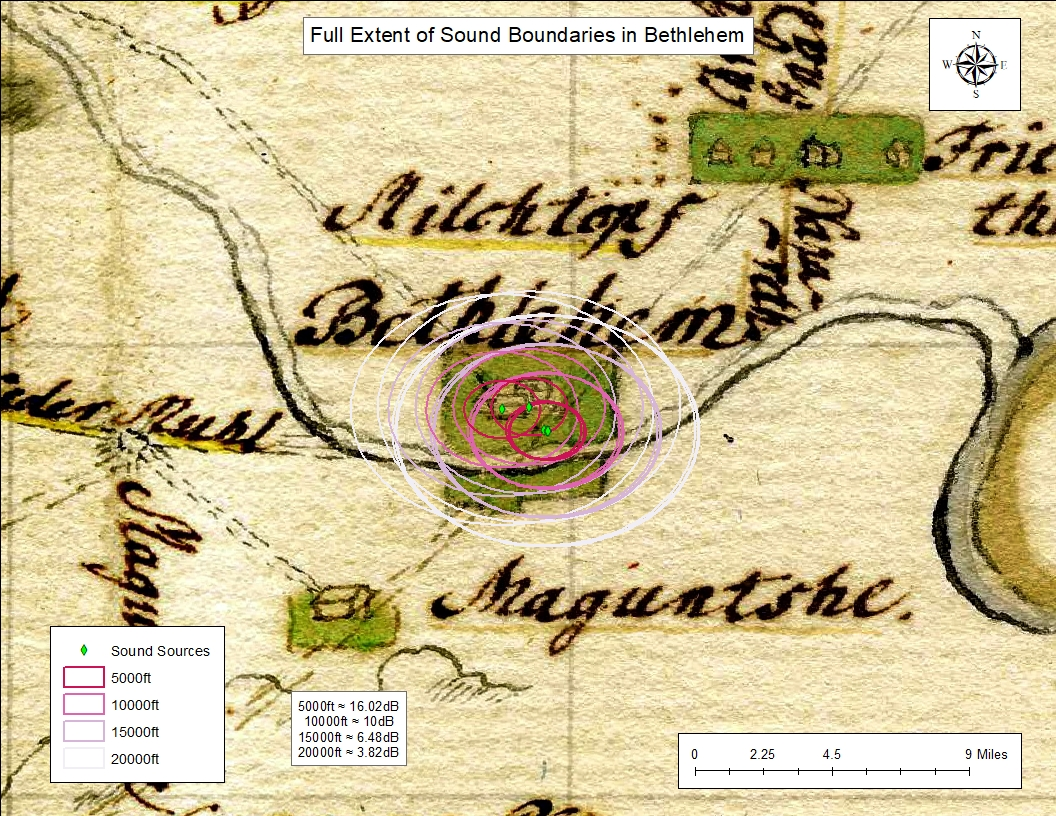In this map, Andrew Hoeger's “Travel Map of Pennsylvania, Northern Maryland and New Jersey (c. 1750)” was used as a basemap to show the acoustic extent of the Bethlehem community, representing about a 2m2 area in 1750. The map shows the extent of sound decay, measured in decibel levels, from the original sound sources (marked as green diamonds) beyond the community. Unlike the SPreAD model maps, this map uses a standard formula for decay of sound over a flat surface not taking into consideration other elements. Considering that 40dB is the level of human whispering and the threshold for human hearing is 0dB, the map demonstrates the original sound sources decay to about 3.82dB at 20,000 ft. (3.79 miles), a range that is nearly inaudible to the human ear. These findings align with the emphasis in Moravian theology on the interconnectedness of physical and spiritual community. Those who were inside of the physical boundary and sonic boundary of the Bethlehem community were also a part of its spiritual community. Hymns sung in central Bethlehem around the Gemeinhaus complex and surrounding communal buildings had an acoustic reach that encompassed the outer physical edges of the community. The continuous reverberations of spiritual singing connected Moravians aurally, physically, and spiritually.


